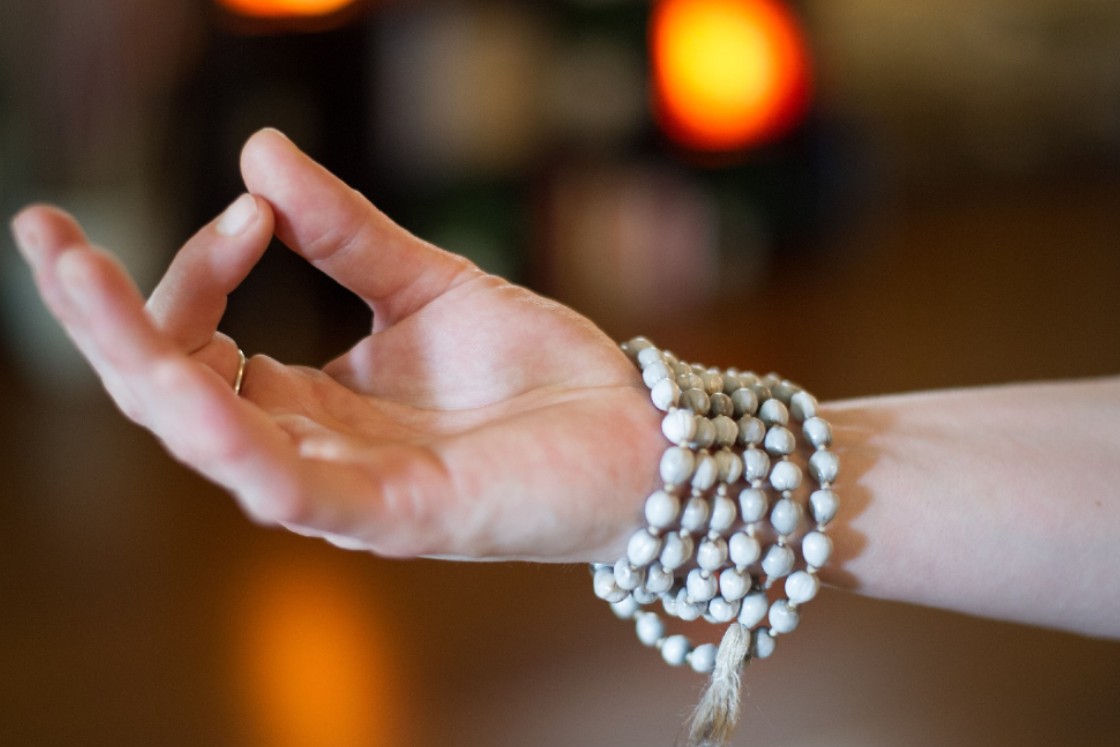
Diabetes is a growing global health concern, marked by high blood sugar levels due to issues with insulin production or function. While standard treatment includes medication, diet, and exercise, complementary practices like yoga mudras can offer additional support.
Yoga mudras are simple hand gestures used in yoga and Ayurveda to activate the body’s natural healing energy. Regular practice of specific mudras may help balance blood sugar levels, improve circulation, reduce stress, and support overall wellbeing.
In this article, discover five effective yoga mudras that can be easily added to your daily routine to naturally aid in managing both Type 1 and Type 2 diabetes.
How yoga mudras help in diabetes?
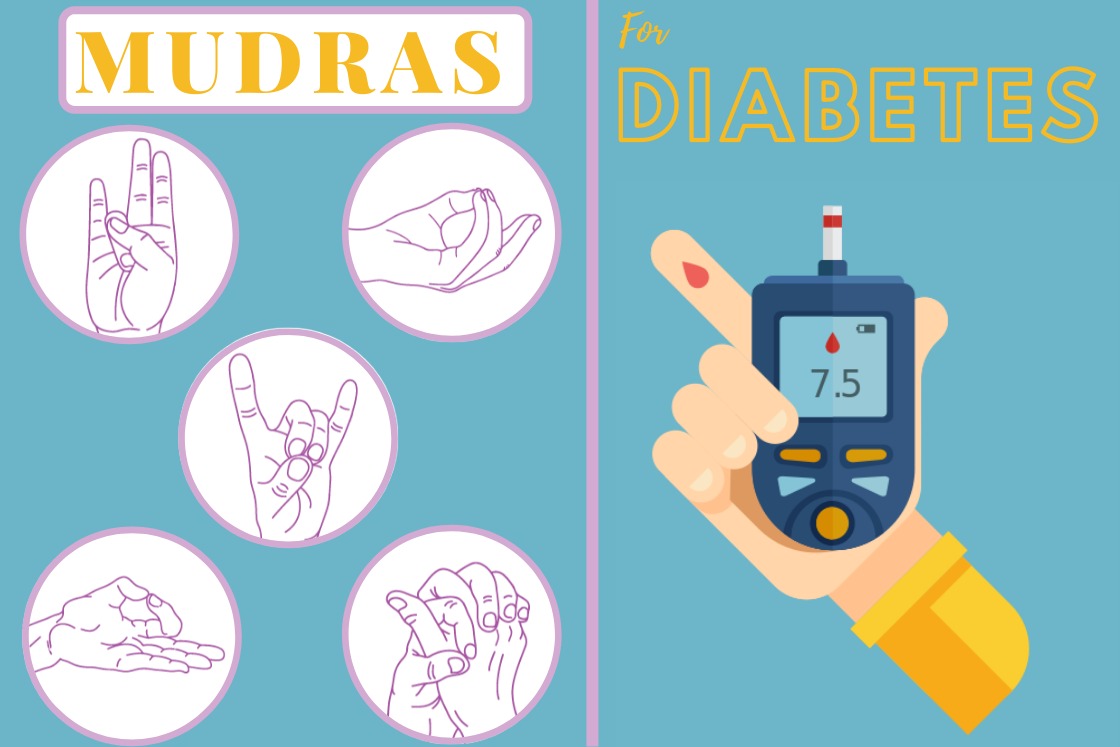
Yoga mudras work by stimulating specific points in the body, which can activate glands, enhance metabolic functions, and promote detoxification. For diabetes management, mudras help by:
- Stimulating Glands: Yoga mudras stimulate certain glands, enhancing their function. For instance, they can activate the pancreas to improve insulin production, which is crucial for regulating blood sugar levels.
- Improving Metabolism: Yoga mudras can boost the body’s metabolic rate, aiding in the efficient processing and utilization of glucose, thereby preventing excess sugar from accumulating in the bloodstream.
- Detoxification: Some mudras facilitate the elimination of toxins, including excess glucose, through enhanced urination and sweating. This detoxification process helps in maintaining optimal blood sugar levels.
- Relaxation and Stress Relief: Stress and anxiety can exacerbate diabetes symptoms. Regular practice of mudras helps relax the mind and body, reducing stress levels and mitigating its impact on diabetes.
Yoga mudras for diabetes
For individuals with diabetes, certain mudras are believed to help in balancing energy, improving circulation, and fostering a sense of calm.
The mudras below are popularly used for diabetes management. You can choose to practice one or two of these mudras and observe their effects. Remember, while these practices can complement your overall health routine, they should not replace medical advice or treatment.
1. Surya Mudra: mudra to improve insulin secretion
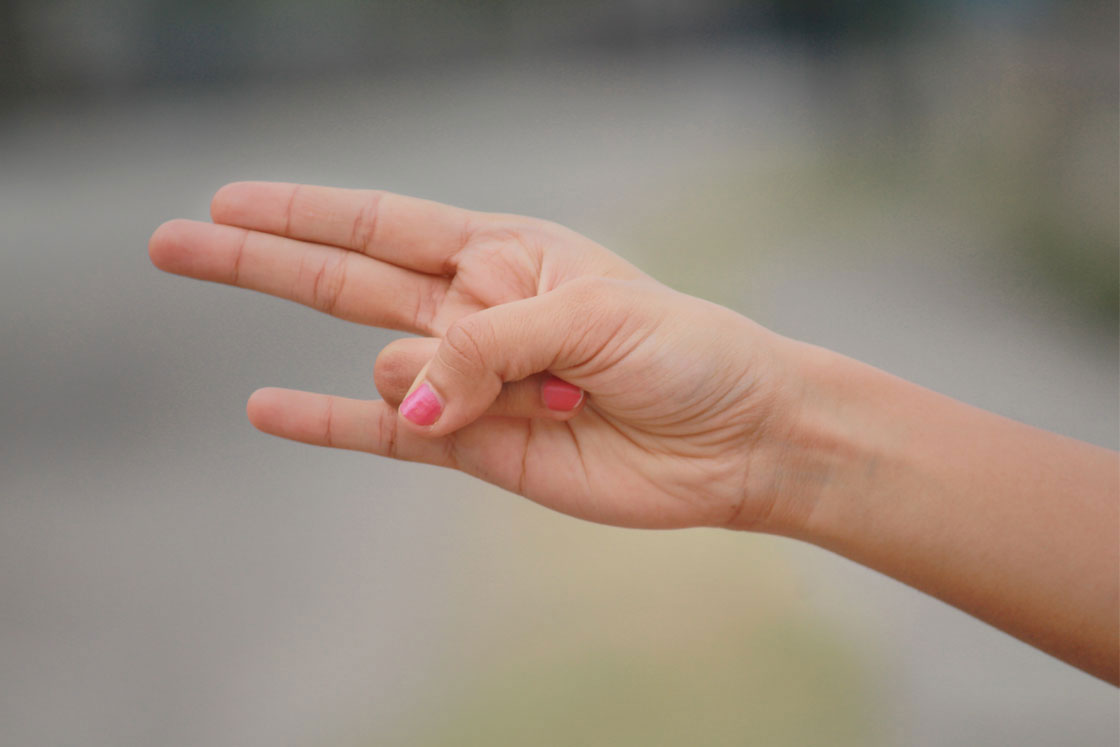
As the name suggests, Surya Mudra is the hand gesture of the Sun, symbolizing hear or fire in the body. Just as the Sun provides us with heat, this mudra acts as a catalyst to generate heat within the body.
The heat produced by Surya Mudra helps the pancreas to produce more insulin. When insulin is released, it allows glucose to enter the body’s cells, where it is converted into energy. This process helps lower blood glucose levels and manage diabetes more effectively.
For those with Type 1 diabetes, surya mudra aids in lowering blood sugar levels by enhancing the body’s ability to convert glucose into energy.
To do Surya mudra:
- Sit in Vajrasana or thunderbolt pose.
- Fold your ring finger and place the tip of thumb over the middle phalanx (bend part) of the ring finger.
- Extend rest three fingers straight or keep it little bent as per your convenience.
- Do it with your both hands and place hands over your thighs or kneecap.
Do surya mudra 3 times a day for effectiveness in diabetes; morning, noon, and evening. Each time at least 15 minutes, 5 minutes before and 10 minutes after taking a meal.
Surya mudra by improving the digestion process also boosts up the metabolism process. Boost in metabolism also promotes weight loss.
Also Read: Benefits of performing Surya Mudra
2. Apana Mudra: mudra to support digestive health and detoxification
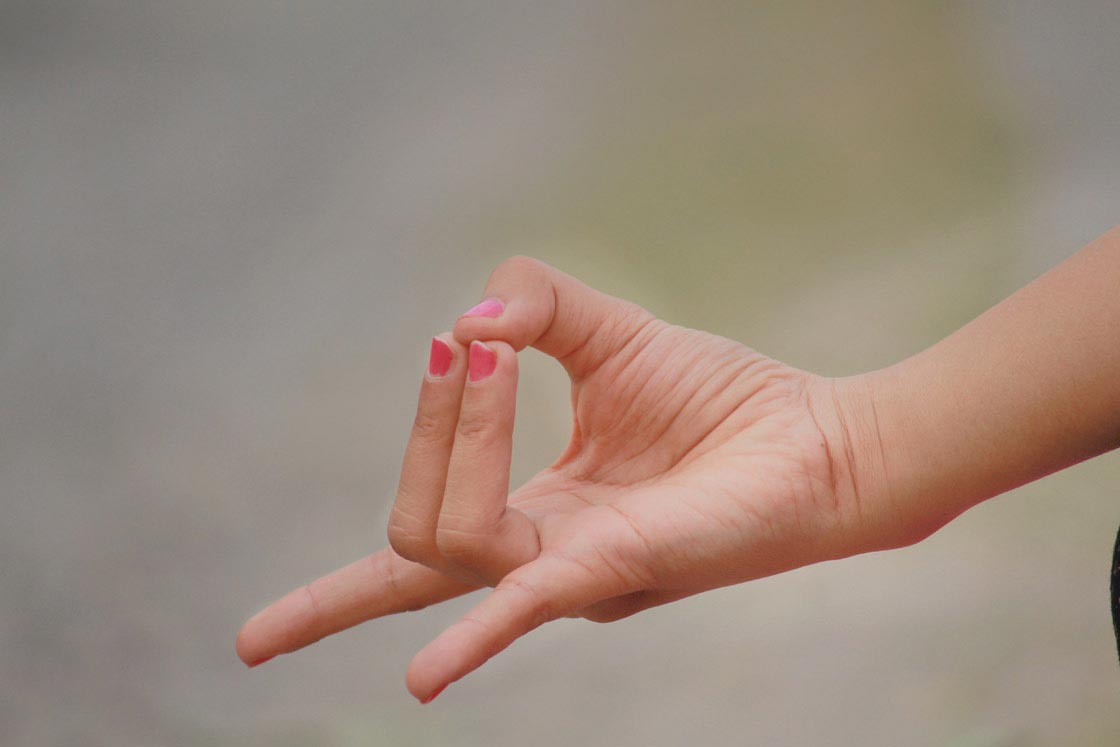
This detoxification mudra helps eliminate waste from the body. Apana Mudra enhances the function of Apana Vayu, which is responsible for the downward and outward flow of energy, such as excretion, urination, sweating, and breathing out.
For diabetes management, Apana Mudra aids in flushing out impurities around the glands and in the digestive system that may hinder the secretion of essential hormones like insulin. Additionally, by increasing urination, it helps expel excess sugar from the blood.
Apana mudra supports better blood sugar control for both Type 1 and Type 2 diabetes by flushing out excess glucose and impurities.
To do Apana Mudra:
- You can sit in any cross-legged pose on the floor or even can do it while standing.
- Bend middle and ring fingers of both hands to touch the tip of the thumb. Extend rest fingers straight.
- Hold this finger arrangement for 10 to 15 minutes. You can rest your hands on thighs.
Do this mudra in the morning time for better cleansing. Also, the practice of this mudra eases in childbirth and menstrual cycle.
3. Prana Mudra: mudra for energy and vitality
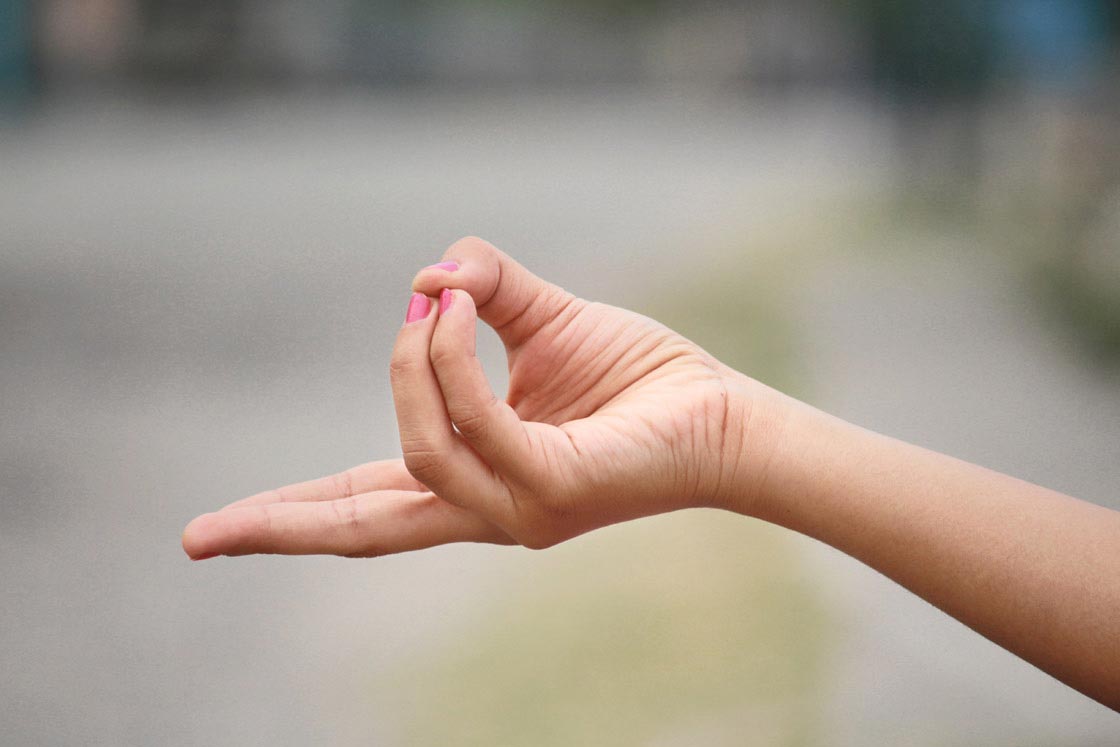
Prana mudra hand gesture symbolizes vitality, which is present within us in the form of Prana Vayu.
Diabetic patients are often prone to immune system malfunctions. To support the body’s defense mechanisms, Prana Mudra is a powerful practice that enhances Prana Vayu, helping to boost overall vitality and immunity.
To do Prana Mudra:
- You can do it while sitting relaxed, lying on the bed, or even walking.
- Fold the ring and little fingers of both hands and touch it with the tip of the thumb. Rest two fingers lightly stretched.
- Hold the pose for as long as you are comfortable. Preferably 15 minutes in one sitting is recommended.
This mudra should be followed by Apana Mudra in sequence, as Apana Vayu represents downward energy while Prana Vayu represents upward energy. Performing them in this order helps balance both energies.
You can also do prana mudra in a pranayama session for better results.
4. Linga Mudra: mudra to lower blood sugar level
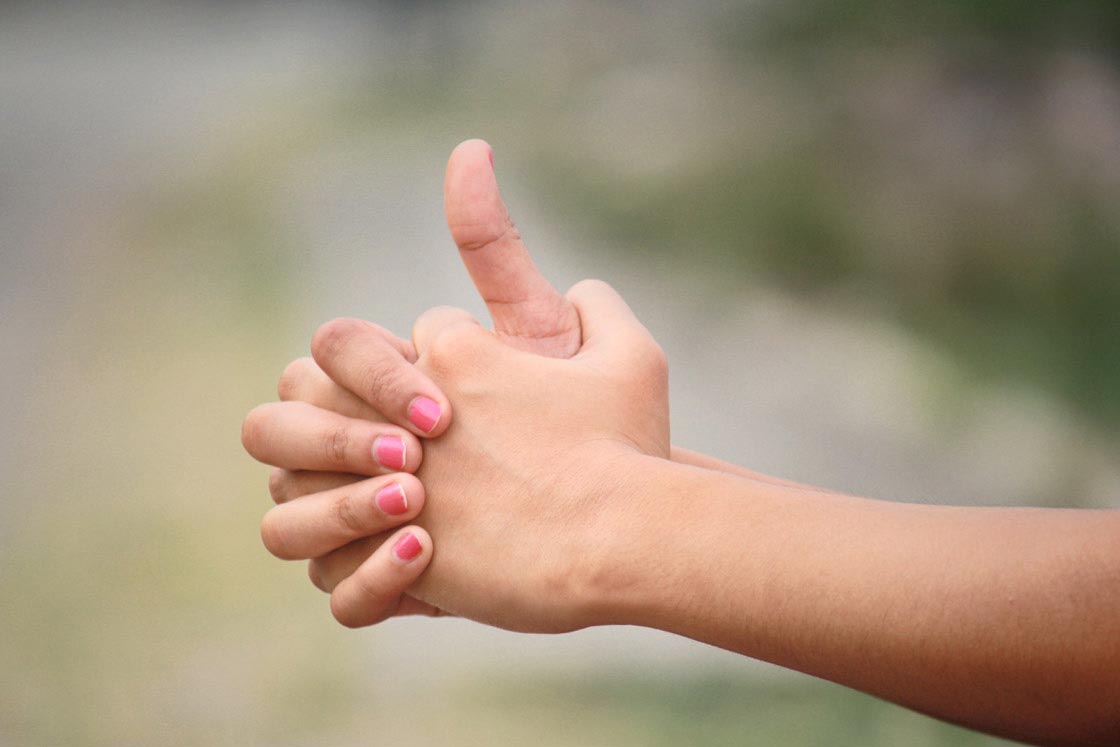
The term ‘Linga’ is often associated with the male reproductive organ, which is believed to be a powerful source of energy in the body.
Linga mudra enhances the quantity of the fire element of the body. Among 5 elements of body, the fire element is responsible for boosts up the metabolism. A boost in metabolism lowers the blood sugar level, thus helpful in managing diabetes.
To do Linga Mudra:
- Sit comfortably on the floor and bring your both hands in front of your chest level
- Now interlock the fingers of both your hands against each other
- Straight up the thumb of freehand and wrap the opposite hand thumb around it.
Do this mudra for 15-20 minutes regularly to see changes within 1 month. This is a very powerful mudra reducing excess belly fat.
5. Gyan Mudra: mudra for mental clarity and focus

This mudra should be practiced at the end of the mudras sequence for diabetes as it calms down all bodily sensations and over-stimulated energies. It provides a soothing effect to the seeker.
Diabetes can also happen due to stress and anxiety in our lifestyle. Performing Gyan mudra creates a calming environment in mind thus helps to relieve symptoms of stress and anxiety.
According to Ayurveda, the cause of Type 1 Diabetes is an imbalance in Vata dosha (air and ether). Gyan mudra is also called Vayu varthak mudra (air element booster). Hence, by performing Gyan mudra type 1 diabetes can be managed.
Also Read: Yoga mudras for Balancing Doshas
To do Gyan Mudra:
- Come in a meditative or relaxing pose, lotus pose, or easy pose.
- Fold your index finger and touch the tip of it with the tip of the thumb. Rest 3 fingers should be extended or lightly stretched.
- Place this finger arrangement over the kneecap, palm facing up, and do deep breathing.
Hold the pose at least for 15 minutes. Performing this mudra in the morning brings more calmness to the mind.
Bottom line
Diabetes and other lifestyle-related diseases are increasingly common today due to changes in our lifestyle and reduced physical activity.
Yoga mudras, though simple, are powerful practices that can bring significant benefits. Regular practice of these mudras can help maintain blood sugar levels, detoxify the body, and boost metabolism. Additionally, incorporating mudras into your routine may help prevent complications associated with diabetes, such as heart disease and high blood pressure.
Integrate these yoga mudras into your daily routine and experience their positive effects on managing diabetes. If you have practiced any of these mudras or have any questions, please share your experiences or inquiries in the comment section below!





Mr Ashish
I enjoy reading your artcles especially on Mudras.
Question 1
Do we do all these 5 mudras in one session?
If so how long to hold each mudra?
Question 2
You mentioned the sequence.
The mudras above are the right sequence?
Thank you for your guidance.
Keep up the good work.
Regards
Alex
Hello Ashish: Thank you for this informative article. I am pre-diabetic. 69 yrs old Female. Could you kindly create a pranayama sequence for these 5 mudras to be used with pranayama breathing and all 3 bandhas? Can I incorporate the bandhas every 2-3 minutes in between the pranayama breathing rhythms while holding these mudras for diabetes? Will this increase effectiveness of the prana movement throughout the body? If each mudra needs at least 15 minutes for effectiveness, Can I just keep moving forward in the same pranayama session with all 5 mudras back to back? Will this be too much for the body to handle at one time or will it not be productive if done in ONE LONG session? Please offer your expert guidance for a diabetic pranayama session that I can do every day? Shall I alternate mudras? Please help? Thank you, Angi
Hello Angi, I’ll definitely create a desired sequence of what you asked though it may take a little time.
Bandhas are always a great choice to incorporate with Mudra & Pranayama session, as long as you don’t get any difficulty in doing it because bandhas need to practice with safety measures, especially in senior persons. Obviously, It will increase the Prana movement in the body.
In the same pranayama session holding different mudras either can work or cannot be, it depends on what specific element or at what specific part the mudra and pranayama stimulate separately. For this, it’s best to follow the sequence prepared by an expert teacher. So it would be a good practice for you to perform These Mudras alone in a session.
However, these Pranayamas you can practice separately in another session for diabetes.
Hello Ashish,
What you said is absolutely right.
All the five yoga mudra explained are Hasta Mudras which need hands and fingers for performing the mudras. Few pranayamas do not require use of hands such as – Kapalbhati, Bastrika, Ujjai, Sheetali, Sheetkari etc. As Surya Mudra & Apana Mudra generates heats and purify the system, it is not advisable to perform Kapalbhati and Bhastrika along with these mudras as this will over stimulate the system and may adversely affect. On the other hand cooling pranayama will reduce the effect of Mudras and hence it is also not advisable. Brahmari and Ujjai pranayama can be performed with these Mudras. It is better to have conscious deep breathing focusing on the Mudra only, while performing Yoga Mudras. Bandhas & Kumbhaka (both internal and external) can be incorporated separately during pranayama practice after every round of Kapalbhati and Bhastrika etc.
I agree with your logic. It’s enlightening!